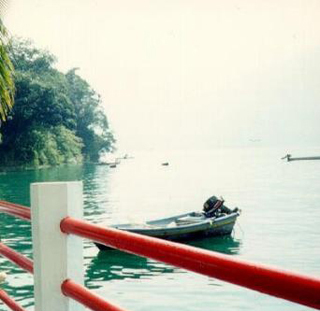| Legole.Com Discover china. Explore the beauty and wonder of the land, people, and culture of China. |
 |
|
|
 |
 Sun and Moon Lake is situated to the north of Mt. Yushan (Jade Mountain) and to the south of Mt. Nenggao, Nantou County in Taiwan province. It is due to the physical features of the lake near Guanghau Island that it is named Sun and Moon Lake. To the northeast of the island the lake resembles the round shape of the sun while to the southwest the lake resembles a crescent moon, hence the name, Sun and Moon Lake. The sun and moon portions of the lake are linked by an islet. Originally named Zhuzi, this islet was renamed "Guang Hua (brilliance) Islet" in celebration of recovering Taiwan after victory in the Japanese war. Sun and Moon Lake is situated to the north of Mt. Yushan (Jade Mountain) and to the south of Mt. Nenggao, Nantou County in Taiwan province. It is due to the physical features of the lake near Guanghau Island that it is named Sun and Moon Lake. To the northeast of the island the lake resembles the round shape of the sun while to the southwest the lake resembles a crescent moon, hence the name, Sun and Moon Lake. The sun and moon portions of the lake are linked by an islet. Originally named Zhuzi, this islet was renamed "Guang Hua (brilliance) Islet" in celebration of recovering Taiwan after victory in the Japanese war.
Originally, Sun and Moon Lake was only a small natural lake. However, during the Japanese occupation a dam was built to raise the lake's water level and generate hydroelectric power. It is now the largest natural lake in Taiwan drawing water from the Juoshuei River, which has its source on Mt. Hehuan. With an elevation of 760 meters above sea level, the lake's perimeter is 35 kilometers, the depth of the water is 30 meters on average and the lake area is over 900 hectares.
Sun and Moon Lake is the best known of Taiwan's scenic reservoirs, attracting a large number of honeymooners and domestic tourists. It is easily Taiwan's most beautiful lake -- the clear, sparkling blue water set against the magnificent mountain backdrop is a wonderful sight to behold. The constant flow of water through Sun and Moon Lake inhibits the growth of lichen, keeping the waters clear and bright and allowing the rearing of delicious fish and shrimp. Mountain peaks rise one upon another along with range upon range of hills are green and luxuriant. The calm mirror-like surface of the azure lake water reflects the islet in the lake and surrounding mountains. The play of light upon the waves and the shadows of mists offer different morning and evening scenery all year round making this a truly poetic and picturesque place to visit.
There are many things to see around the lake and it takes at least a full day to have a good look at this place. Wenwu Temple, Peacock Garden, Temple of Butterfly, Xuanguang Temple, Hsuan Chuang Temple, Hanbi (noble jade) Tower, Dehuashe Aboriginal Village, Shuantsang Buddhist Temple, and the nine-story Tsuen Pagoda are just a few of the many places you will want to visit. In addition to tours of the lake and bird watching, visitors should not miss the aboriginal Shao tribe's annual harvest festival. Pavilions, terraces and towers are wonderful places in which to enjoy the sights.
Set among the natural scenery the temples and ancient pagodas are dotted hither and thither, adding an air of great antiquity and serenity, full of the traditional culture of the Chinese nation. The more attractive ones are the Hsuan Chuang Temple at the foot of Blue Dragon Mountain and the Tannan and Wen Wu Temples half way up the mountain, Taipei.
Inside the Hsuan Chuang Temple a statue of the eminent monk Hsuan Chuang of Tang Dynasty is enshrined. The horizontal inscribed board "National Master of Law" is hung inside the temple. At the back part of the temple, there is a staircase of stone of 1300 odd steps leading upwards to the Hsuan Chuang Hall. The Temple, standing tall and imposing, brilliant and grand, is full of national characteristics.
The Wen Wu Temple is constructed alongside the mountain and projects an air of power and grandeur. The building is magnificent indeed, with red eaves gutter and green tiles, high towers and superb pavilions. A statue of Confucius is enshrined in the Wen Temple while in the Wu Temple a statue of Guan Yu (a famous General in Han Dynasty) is enshrined. Statues of Holy Farmer King, Wen Chang King and the Jade Emperor are also worshipped here. |
 |
|
|
 |
|
